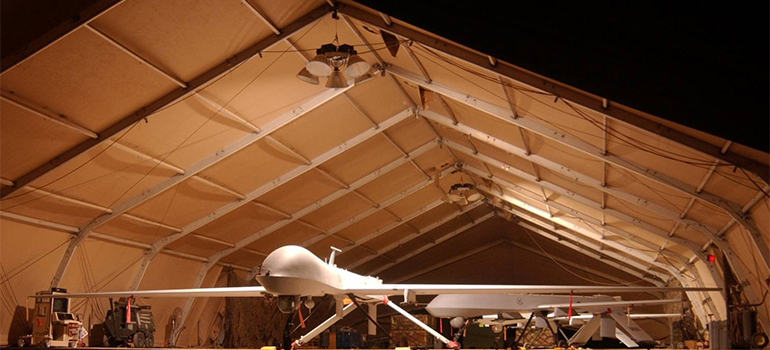Is the U.S. overstepping boundaries with its controversial drone program? UBC’s Max Cameron offers his perspective
With reports of fatal U.S. drone strikes in countries such as Pakistan and Afghanistan, Prof. Max Cameron of UBC’s Dept. of Political Science discusses the moral and legal issues associated with the controversial military program.
Is the U.S. drone program legal?
Congress recently heard how a Pakistani grandmother with no links to terrorism was “exploded to pieces” by a U.S. drone attack. Examples like this reinforce claims by Human Rights Watch and Amnesty International that U.S. drone pilots have committed humanitarian crimes. Such allegations obviously raise questions about whether the United States is violating international law – and what kinds of protections the U.S. Constitution offers for innocents and as a guarantee of due process going forward.
Exact figures on the numbers of civilians killed by drones are not available, and the figures we have–from the U.S., Pakistan, and independent reports–are controversial. But there is mounting evidence that U.S. drone pilots operating in Pakistan alone have killed hundreds of innocent civilians*.
What’s the biggest dilemma facing the U.S. drone program?
The U.S. needs to balance its ability to use military force in the post 9/11 world with the imperative for greater safeguards against civilian death, including clear criteria to govern the use of force and the opportunity for public oversight, at the level of the U.S. legislature.
Public deliberation is needed to clarify so many grey areas. Who is a civilian and who is a “militant”? By what criteria are people designated legitimate targets? When is it legal to kill combatants outside active hostilities? What makes a targeted killing different from an extrajudicial execution or assassination? How can we know when a killing is justified on grounds of self-defence, and when is it punitive?
What are some risks attached to the drone program?
First, the drone program may well be creating blowback in places like Pakistan and Yemen, encouraging more hostility toward the U.S. Second, we need to think about the proliferation of drones. What happens when China starts to use drones over other countries where it has vital interests to protect? Is the US prepared to let other countries play by the same rules?
How did we get here? Where do these constitutional issues originate?
They can be traced to the Patriot Act, a set of legal changes the Bush administration introduced after 9/11 that substantially enhanced the powers of the president. Essentially, it gave the president and his executive the power to decide who lives or dies, without due process and oversight. The Obama administration has balked at relinquishing these powers and, in fact, has dramatically increased drone warfare. There have been more than 300 strikes by unmanned drones in Pakistan alone.
How can the U.S. limit the number of civilian deaths and ensure that the drone war is legal and constitutional?
First and foremost, the U.S. legislature – not the executive – needs to write the guidelines governing America’s use of force. The second step would be the creation of a drone court, with a judge that holds the executive accountable by assessing the legality of its actions in light of the law. Such a court could also provide remedy for victims.
The final step would be to scale back the CIA’s role in drone strikes. President Obama has been extraordinarily deferential to the CIA. But the CIA should be limited to providing intelligence, not fighting covert wars. It is a creature of the executive, operating outside the public domain, over which the deliberative branches of government have little control.
Maxwell A. Cameron teaches political science at the University of British Columbia and directs UBC’s Centre for the Study of Democratic Institutions. He is the author of Strong Constitutions: Social-Cognitive Origins of the Separation of Powers.
*The International Human Rights and Conflict Resolution Clinic at Stanford Law School and Global Justice Clinic at NYU School of Law put the number of civilians killed by drones between 2004 and 2012 at between 474 and 881, including 176 children. See: Living Under Drones: Death Injury, and Trauma to Civilians from US Drone Practices in Pakistan, September 2012.






















